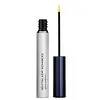What's inside
What's inside
 Key Ingredients
Key Ingredients

 Benefits
Benefits

 Concerns
Concerns

No concerns
 Ingredients Side-by-side
Ingredients Side-by-side

Water
Skin ConditioningButylene Glycol
HumectantHydroxyethylcellulose
Emulsion StabilisingSodium Hyaluronate
HumectantOctapeptide-2
Skin ConditioningCopper Tripeptide-1
Skin ConditioningSh-Polypeptide-1
Skin ConditioningCucurbita Pepo Seed Extract
Skin ConditioningGlycine Soja Oil
EmollientGlycerin
HumectantHydrogenated Lecithin
EmulsifyingRhizobian Gum
Biotin
AntiseborrhoeicDicalcium Phosphate
AbrasivePanthenol
Skin ConditioningPantethine
EmollientDipotassium Glycyrrhizate
HumectantAllantoin
Skin ConditioningSea Water
HumectantAlcohol
AntimicrobialIsopropyl Cloprostenate
Phenoxyethanol
PreservativeDisodium EDTA
Citric Acid
BufferingChlorphenesin
AntimicrobialSorbic Acid
PreservativeSodium Oleate
CleansingPotassium Sorbate
PreservativeSodium Hydroxide
BufferingWater, Butylene Glycol, Hydroxyethylcellulose, Sodium Hyaluronate, Octapeptide-2, Copper Tripeptide-1, Sh-Polypeptide-1, Cucurbita Pepo Seed Extract, Glycine Soja Oil, Glycerin, Hydrogenated Lecithin, Rhizobian Gum, Biotin, Dicalcium Phosphate, Panthenol, Pantethine, Dipotassium Glycyrrhizate, Allantoin, Sea Water, Alcohol, Isopropyl Cloprostenate, Phenoxyethanol, Disodium EDTA, Citric Acid, Chlorphenesin, Sorbic Acid, Sodium Oleate, Potassium Sorbate, Sodium Hydroxide
Water
Skin ConditioningGlycerin
HumectantBiotin
AntiseborrhoeicCellulose Gum
Emulsion StabilisingPhenoxyethanol
PreservativeChlorphenesin
AntimicrobialDisodium Phosphate
BufferingPhosphoric Acid
BufferingDechloro Dihydroxy Difluoro Ethylcloprostenolamide
Butylene Glycol
HumectantCalendula Officinalis Extract
Skin ConditioningPanax Ginseng Extract
AntioxidantQuercus Serrata Extract
Skin ConditioningCamellia Sinensis Extract
AntioxidantSwertia Japonica Extract
Skin ConditioningTriticum Vulgare Germ Protein
EmollientPentylene Glycol
Skin ConditioningBiotinoyl Tripeptide-1
Octapeptide-2
Skin ConditioningWater, Glycerin, Biotin, Cellulose Gum, Phenoxyethanol, Chlorphenesin, Disodium Phosphate, Phosphoric Acid, Dechloro Dihydroxy Difluoro Ethylcloprostenolamide, Butylene Glycol, Calendula Officinalis Extract, Panax Ginseng Extract, Quercus Serrata Extract, Camellia Sinensis Extract, Swertia Japonica Extract, Triticum Vulgare Germ Protein, Pentylene Glycol, Biotinoyl Tripeptide-1, Octapeptide-2
 Reviews
Reviews

Ingredients Explained
These ingredients are found in both products.
Ingredients higher up in an ingredient list are typically present in a larger amount.
Biotin is a B vitamin that is naturally produced by our bodies. It is also called Vitamin H.
Our bodies use biotin in the metabolism process. It also helps our bodies use enzymes and move nutrients around. A biotin deficiency can lead to brittle hair and nails.
More research is needed on applying biotin topically. However, taking biotin orally has been shown to help nourish the skin, hair, and nails. They play a role in forming skin-hydrating fatty acids.
Biotin is water-soluble. It can be found in foods such as fish, eggs, dairy, nuts, and meat. Vitamin H stands for "haar" and "haut". These are the German words for hair and skin.
Learn more about BiotinButylene Glycol (or BG) is used within cosmetic products for a few different reasons:
Overall, Butylene Glycol is a safe and well-rounded ingredient that works well with other ingredients.
Though this ingredient works well with most skin types, some people with sensitive skin may experience a reaction such as allergic rashes, closed comedones, or itchiness.
Learn more about Butylene GlycolChlorphenesin is a synthetic preservative. It helps protect a product against bacteria in order to extend shelf life. In most cases, Chlorphenesin is paired with other preservatives such as phenoxyethanol and caprylyl glycol.
Chlorphenesin is a biocide. This means it is able to help fight the microorganisms on our skin. It is also able to fight odor-releasing bacteria.
Chlorphenesin is soluble in both water and glycerin.
Studies show Chlorphenesin is easily absorbed by our skin. You should speak with a skincare professional if you have concerns about using Chlorphenesin.
Learn more about ChlorphenesinGlycerin is already naturally found in your skin. It helps moisturize and protect your skin.
A study from 2016 found glycerin to be more effective as a humectant than AHAs and hyaluronic acid.
As a humectant, it helps the skin stay hydrated by pulling moisture to your skin. The low molecular weight of glycerin allows it to pull moisture into the deeper layers of your skin.
Hydrated skin improves your skin barrier; Your skin barrier helps protect against irritants and bacteria.
Glycerin has also been found to have antimicrobial and antiviral properties. Due to these properties, glycerin is often used in wound and burn treatments.
In cosmetics, glycerin is usually derived from plants such as soybean or palm. However, it can also be sourced from animals, such as tallow or animal fat.
This ingredient is organic, colorless, odorless, and non-toxic.
Glycerin is the name for this ingredient in American English. British English uses Glycerol/Glycerine.
Learn more about GlycerinOctapeptide-2 is a peptide.
Phenoxyethanol is a preservative that has germicide, antimicrobial, and aromatic properties. Studies show that phenoxyethanol can prevent microbial growth. By itself, it has a scent that is similar to that of a rose.
It's often used in formulations along with Caprylyl Glycol to preserve the shelf life of products.
Water. It's the most common cosmetic ingredient of all. You'll usually see it at the top of ingredient lists, meaning that it makes up the largest part of the product.
So why is it so popular? Water most often acts as a solvent - this means that it helps dissolve other ingredients into the formulation.
You'll also recognize water as that liquid we all need to stay alive. If you see this, drink a glass of water. Stay hydrated!
Learn more about Water